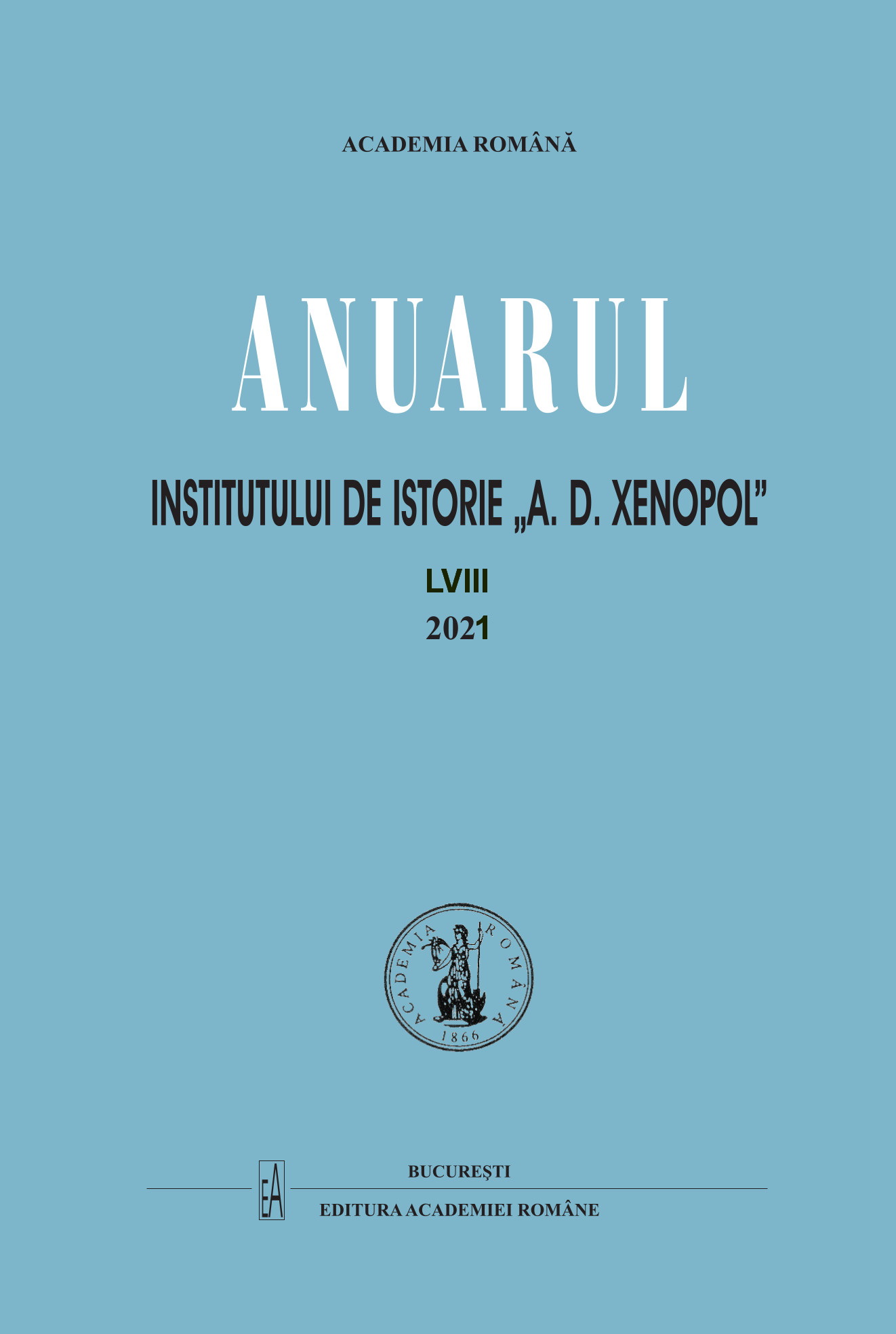DE LA RAGUZA LA ROMA: ÎNĂLȚAREA APUSEANĂ A LUI ȘTEFAN CEL MARE (1474–1475)
FROM RAGUSA TO ROME: THE RISE OF STEPHEN THE GREAT (1474–1475)
Author(s): Alexandru Simon, Ioan-Aurel PopSubject(s): History, Diplomatic history, Military history, 15th Century
Published by: Editura Academiei Române
Keywords: Giovanni Pietro Arrivabene; Georgio de Pasellis; Carlo Visconti; Mehmed II; Matthias Corvinus; Sixtus IV; Stephen III of Moldavia; Vlad III of Wallachia (Dracula); Usun Hassan; Milan; Mantua;
Summary/Abstract: On March 6, 1475, the rivalling representatives of the Milanese duchy, stationed in Bologna (viewed as a protectorate of the House of Sforza), encountered Hungarians and Romanians (commonly recorded as Wallachians in the Middle Ages) on their way to Rome. They brought spoils of wars to Pope Sixtus IV and, most importantly, the confirmation of the already rumoured major defeat suffered by Ottoman Sultan Mehmed II՚s host in Wallachia (in Moldavia in fact), at Vaslui, on January 10, 1475). The “interviewed” envoys (only Romanians nevertheless, according to both Milanese reports on the meeting, authored by competing politicians Georgio de Pasellis and Carlo Visconti) even claimed that up to “107,000 Turks” had fallen in combat. Five days later, on March 11, 1475, Giovanni Pietro Arrivabene, secretary to Cardinal Francesco Gonzaga, wrote from Rome to the cardinal՚s father, Ludovico III il Turco, margrave of Mantua (the increasingly independent ally of Milan), that ‘Duke Stephen Voivode’ (in fact, Stephen III the Great of Moldavia, the victor at Vaslui) was on his way to the Holy City on the Tiber, where Pope Sixtus IV was to crown him king, after Matthias Corvinus, king of Hungary, had appointed Stephen as King of Bosnia. The king on his pilgrim road to Rome was in effect Nicholas Újlaki, (co-)voivode of Transylvania, as well as former ban of Slavonia. Nicholas had indeed been elevated to king of Bosnia already in 1471 by Matthias, most anxious to secure Újlaki՚s neutrality during the renewed Hungarian, as well as regional conspiracy against the Hunyadi monarch. All together, the dispatches of Arrivabene, Pasellis and Visconti, (very) much different in terms of style, revealed Eastern so-to-say realities (e.g. the “107,000” Ottoman casualties), that were – more or less (depending on the author) – tailored to suit proper Italian politics. A year earlier the situation had been quite different. As revealed also by the Papal brief from July 1,1475, preserved in Mantua, between early 1474 and spring/ mid-1475, Stephen III of Moldavia went from “nobody” to the ‘beloved son’ of Pope Sixtus IV, like the duke of Mantua himself or the doge of Venice, but also the ‘athlete of the Christian faith’. We therefore turn to a record, a letter, in the archives of Dubrovnik. Roughly a week before Ali Mihaloğlu, bey of Vidin and Smederevo, raided Oradea (February 7–8, 1474), the royal link between Hungary proper and the Voivodate of Transylvania, the Commune of Ragusa, equally vassal to Ottoman sultan Mehmed II and to Matthias Corvinus, king of Hungary, informed the Venetian doge, Nicolò Marcello, her Adriatic neighbour, about the most recent developments at the Porte, as well as both at the Porte՚s Asian and European borders (January 31, 1474). From the latest news on Usun Hassan, still viewed by some as Christendom՚s main anti-Ottoman hope (in spite of the crippling losses he had suffered in August 1473), Ragusa moved on – in her message to Venice (earlier Usun՚s main supporter) – to the combats in Vlachia Maior (Wallachia proper), recently invaded by Stephen III the Great of Moldavia (November 8–30, 1473). The information had likewise been provided by the Ragusan envoys to the Porte, who had just returned to the Adriatic, after departing from Constantinople (Istanbul) on December 28, 1473. With Venice waging an increasingly desperate war against Mehmed (for ten years and counting), the task of conveying Ottoman inside information was very delicate for tribute paying Ragusa. The Ragusan message is the only extant known source to state that Stephen III the Greathad won Wallachia from Radu III the Handsome for the benefit of Vlad III the Impaller. The rest of the known sources (however chronicles, not documents) claim that Stephen enthroned Basarab III Laiotă as ruler of Wallachia (Laiotă was his Wallachian ruler of choice until autumn 1474).Ragusa՚s Venetian message bluntly contradicts the known contemporary data on Stephen III՚s intervention in Wallachia in November 1473 and on the subsequent events, data preserved only in the chronicles of Stephen III (chiefly in the Moldavian-German Chronicle intended for Habsburg subjects, around 1499–1500) and in the writings of Jan Długosz (notoriously hostile towards the Hunyadis).
Journal: Anuarul Institutului de Istorie »A.D. Xenopol« - Iaşi
- Issue Year: LVIII/2021
- Issue No: 58
- Page Range: 31-48
- Page Count: 18
- Language: Romanian

